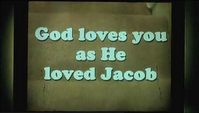 • Here's the theory:
• Here's the theory:
The storyline of the tv show LOST has been strongly based on and inspired by the 1933 novel “Lost Horizon” by James Hilton.
•
Brief Summary of the Novel:“Lost Horizon” is about a group of westerners who crash land a plane high in the Himalayan Mountains. They are discovered by a group of monks and taken to the mysterious village of Shangri-La, which is revealed to be a secret paradise. While some of the westerners feel as though they’ve reached utopia, others feel that they are imprisoned with little means of escape.
The main character of the book, Hugh Conway, is one of the rescued that believes he’s found paradise. After a meeting with the High Lama, it is revealed that the plane crash that brought him to Shangri-La was planned. Conway was ‘chosen’ to come to Shangri-La to live in peace and prosperity for an eternity, since the inhabitants have discovered the keys to agelessness.
Against better judgment, Conway eventually gives in to a fellow westerner’s wishes to attempt an escape. After a tremendous journey, Conway returns to the western world only to terribly regret ever leaving Shangri-La. He returns to the mountains and spends the rest of his life searching to find this hidden paradise again.
•CONNECTIONS and SIMILARITIES
- Firstly, the title
- Non-Accidental plane crash in remote location (and compare the cover of the book to some of the shots in the season 3 opener!).
- Location is undetectable from outside world.
- Despite the extreme remoteness, all modern conveniences are available: electricity, running water, food, supplies, etc. are dropped off periodically.
- When Ben offers to Jack of a way home, the fact that these modern conveniences are available is offered as proof that there's a way off the island. This is the same reasoning given to the crash survivors in Shangri-La.- Mysterious healing properties of the locale.
- Eastern Philosophies: Dharma, “Namaste”, and the I-Ching symbols that surround the Dharma logos are all related to eastern religion/philosophy, which is also what the lamasery of Shangri-La is founded upon.
- “Life extension project” – all residents of Shangri-La live much longer than the normal lifespan, some for 100’s of years.
- Redemption: Some characters in the book have criminal lives they’d like to leave behind, and feel like they’ve been given a second chance.
- Like Ben and Juliet knowing all about the survivors, the leaders of Shangri-La know everything about Hugh Conway's past. - “One of the good ones.” Conway has been judged and chosen through mysterious means that he is a good person and belongs in Shangri-La.
- Through war, disease, overpopulation, etc., mankind will extinguish itself (the
valenzetti equation). The High Lama and Conway speak at length about the nature of man, and about how the dwellers of Shangri-La have discovered the true way to live. Due to mankind’s tendencies of war and destruction, the world’s civilizations will eventually collapse and destroy themselves. It is at this time when the occupants of Shangri-La will emerge with their peaceful ways, and “the meek shall inherit the earth.” The solution to all of mankind’s ill can be found in Shangri-La (the island).
Alvar Hanso believes that by sending the DHARMA initiative to the island, they'll find the answers and will save mankind from self-destruction.
You might say that the main theme of the book is the question whether or not man can overcome his dark past, be redeemed, and to have enough faith to find renewal. The show flows along strongly similar themes.Through these connections here’s my theory about the “Lost” storyline in connection to this book:
• Magnus Hanso discovers the island (Shangri-La), while captaining the Black Rock. There is already an ancient civilization that lives there. This is where the statue with the three toes is from.
• Magnus Hanso (who is either Alvar’s father or Alvar himself) leaves the island for some reason, and like Conway, searches with every means necessary to go back. Perhaps it is his son that helps him. Either way, they discover the secret location and are able to return to the island at will.
• Conflict: somehow Alvar (WWII arms dealer??) or someone new who is introduced to the Island has evil intentions, and plans to profit from the riches of the island (in the book, there is gold in Shangri-La). This results in the deaths of the original inhabitants (possibly due to a virus?).
• The Dharma initiative: Either 1) Alvar has a conscience and sends scientists back to find the solutions to humanity’s problems, or 2) the initiative is another way of “mining” the islands unique properties for new technologies/new profit for the Hanso Foundation.
• The scientists get there (the ‘others’) and discover the truth about the island. They also learn the ugly truth about their benefactors (either the Hanso foundation participated in the slaughter of the original inhabitants or the Hanso foundation is there to profit from the island, not to save humanity). The scientists then rebel against the Hanso foundation and aim to create their own “Shangri-La.”
• The scientists, like Valenzetti and like the High Lama from “Lost Horizon,” know that eventually mankind will extinguish itself (“the Dharma initiative has failed”). They scientists are now the ones who will inherit the earth and create a new civilization once this happens. This messianistic (is that a word?) vision is what causes them to want to separate and judge people (“you’re one of the good ones” or “he was a bad person”), take the children and teach them before they are “bad,” and kill anyone who wants to stop them. After all, the future world civilization is at stake. They’ve created a sort of ‘Shangri-La gone wrong.’
• Benjamin Linus (Henry Gale) says he was born on the island. This demonstrates that there were people there before the DHARMA initiative arrived.• Benjamin demonstrates that he knows all about Jack. Like the High Lama of Shangri-La, it's possible that he caused the plane to fly off course just to get Jack on the island. (or not - see "Unlikely Possibilities")
• Benjamin has promised both Michael and Jack that they can go home. The visitors to Shangri-La were also promised that they could leave, but when they actually tried it was revealed that it was near impossible. The same could be true for Jack and Michael. Especially now that communications have been knocked out by the hatch imposion!
Okay, so what do you think??? I’ve had lots of other thoughts regarding this and other connections between the show and the book, and I haven’t necessarily remembered all them here, so I’ll be updating this site with more theories/connections as we go. Please give me your comments!








 Jacob's list is what divides people into one or the other of these camps. If you're one of the others, and you're not on the list, not one of the good ones, or perhaps it's undetermined, then you get sent to the brainwashing room to get converted. If it worked for Ted Haggard, it can work for Karl.
Jacob's list is what divides people into one or the other of these camps. If you're one of the others, and you're not on the list, not one of the good ones, or perhaps it's undetermined, then you get sent to the brainwashing room to get converted. If it worked for Ted Haggard, it can work for Karl. Was Colleen's ritual funeral (the white clothing, the procession, the pyre being sent off to sea) in "The Cost of Living" based on some sort of ancient culture that was on the island long before any of the westerners arrived? Would this same culture be the one responsible for the four-toed statue?
Was Colleen's ritual funeral (the white clothing, the procession, the pyre being sent off to sea) in "The Cost of Living" based on some sort of ancient culture that was on the island long before any of the westerners arrived? Would this same culture be the one responsible for the four-toed statue?